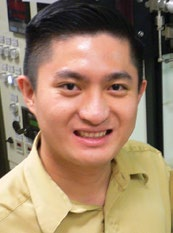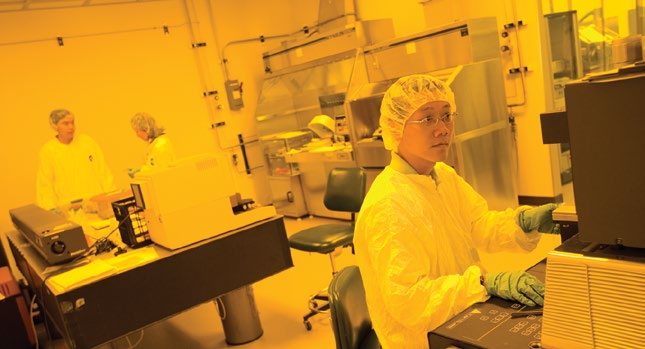Even before they enroll, the students who come to Lehigh to study with Nelson Tansu know what will be expected of them.
Tansu, an associate professor of electrical and computer engineering, directs the MOCVD (Metalorganic Chemical Vapor Deposition) and Nanophotonics Group in Lehigh’s Center for Optical Technologies (COT). His mission is to harness light from semiconductor nanostructures to achieve advances in energy, communications, biosensors and coherent sources.
His aspirations for his students and for his research program are the same.
“Our objective is to solve some of the most important challenges in engineering,” he says, “by applying the fundamentals of physics. This requires rigorous research and academic training in multidisciplinary topics.”
Sixteen graduate students and six postdoctoral fellows have worked in Tansu’s group since he joined Lehigh’s faculty in 2003, and the record suggests they are embracing his goal. The students publish highly cited articles in Applied Physics Letters, the Journal of Applied Physics, Langmuir and other leading refereed journals. Their work has been reported in Compound Semiconductor, Laser Focus World and other publications.
Earlier in 2009, Illuminating Ideas: Innovations in Solid-State Lighting, a publication of the U.S. Department of Energy, said Tansu’s group had achieved one of the solid-state lighting technology highlights of the year by developing staggered InGaN quantum wells that improve the radiative efficiency of green light-emitting diodes (LEDs).
Several of Tansu’s students have received patents and international prizes. Hongping Zhao has won a premier scholarship two years in a row from SPIE, the world’s largest nonprofit professional society for optics, photonics and imaging. Yik-Khoon Ee won the Best Student Paper in nanophotonics at the IEEE Photonics Global Conference 2008, where his paper was chosen from among 96 submitted.
Tansu aims to recruit graduate students who possess three intangible qualities.
“We look for three things in students – motivation, persistence and high expectations for themselves. These can be hard to evaluate, because we don’t have the funds to bring students in for personal visits. So I always interview candidates by phone to determine if they have the right mindset and focus.”
At Lehigh, the new students, under the tutelage of Tansu and the senior graduate students, learn to apply the fundamentals of physics to the science and technology of semiconductor optoelectronics, semiconductor nanostructures and photonics.
“All of our Ph.D. candidates are required to master quantum mechanics, solid state physics, quantum electronics, photonics and lasers,” says Tansu, “and to apply their knowledge to problems in nanostructure photonics materials and devices.
“We work intensively with the students to guide them in their research and academic studies. We try to create a tone and positive atmosphere that enable them to thrive.”
Besides high-efficiency LED lighting, Tansu’s group investigates solar photovoltaic cells, thermoelectric materials and devices, biological and chemical sensors, semiconductor lasers, and nitridebased semiconductors. The research is supported by DOE, NSF, DARPA, DOD and the state of Pennsylvania.
Tansu’s students are trained to use and maintain the COT’s extensive facilities, which include state-of-the-art MOCVD epitaxy reactors, etching tools, dielectric and metal evaporators, and light-resistant lithography equipment. This affords an advantage offered by few other university labs. In one building, students can perform all the steps – simulation, growing materials, advanced characterization, device fabrication and device testing – necessary to make a semiconductor photonics device.
The students put in long hours, but the rewards are worth it.
“Doctoral students typically publish one or two refereed journal articles prior to graduation,” says Tansu. “We expect closer to 10, and most of our students meet or exceed that.
“When our Ph.D. students complete their studies at Lehigh, we believe they are just as competitive as the doctoral graduates from any of the other top programs in the nation, and just as prepared to make contributions to academe or industry.”


